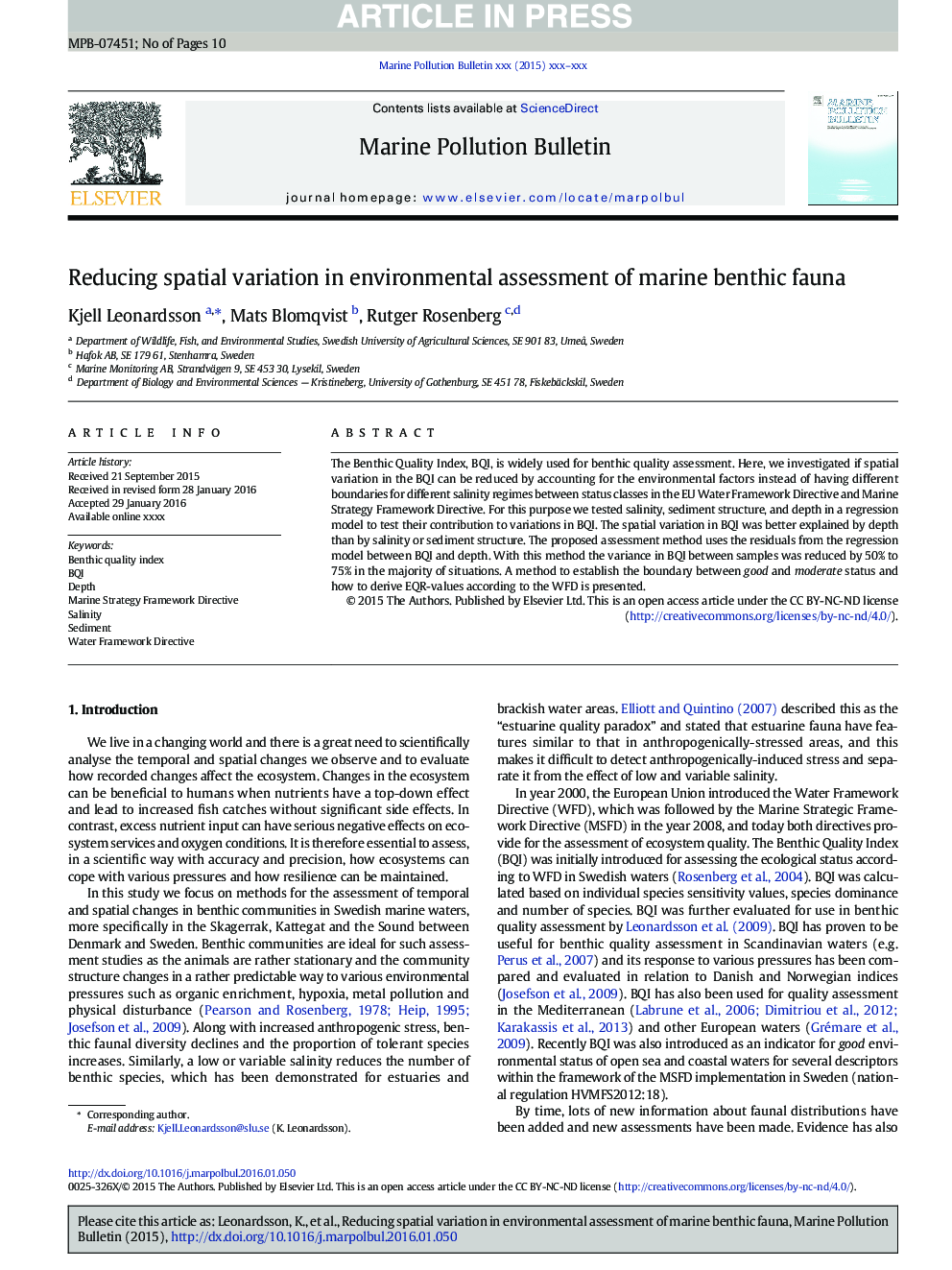| Article ID | Journal | Published Year | Pages | File Type |
|---|---|---|---|---|
| 6355834 | Marine Pollution Bulletin | 2016 | 10 Pages |
Abstract
The Benthic Quality Index, BQI, is widely used for benthic quality assessment. Here, we investigated if spatial variation in the BQI can be reduced by accounting for the environmental factors instead of having different boundaries for different salinity regimes between status classes in the EU Water Framework Directive and Marine Strategy Framework Directive. For this purpose we tested salinity, sediment structure, and depth in a regression model to test their contribution to variations in BQI. The spatial variation in BQI was better explained by depth than by salinity or sediment structure. The proposed assessment method uses the residuals from the regression model between BQI and depth. With this method the variance in BQI between samples was reduced by 50% to 75% in the majority of situations. A method to establish the boundary between good and moderate status and how to derive EQR-values according to the WFD is presented.
Related Topics
Physical Sciences and Engineering
Earth and Planetary Sciences
Oceanography
Authors
Kjell Leonardsson, Mats Blomqvist, Rutger Rosenberg,
